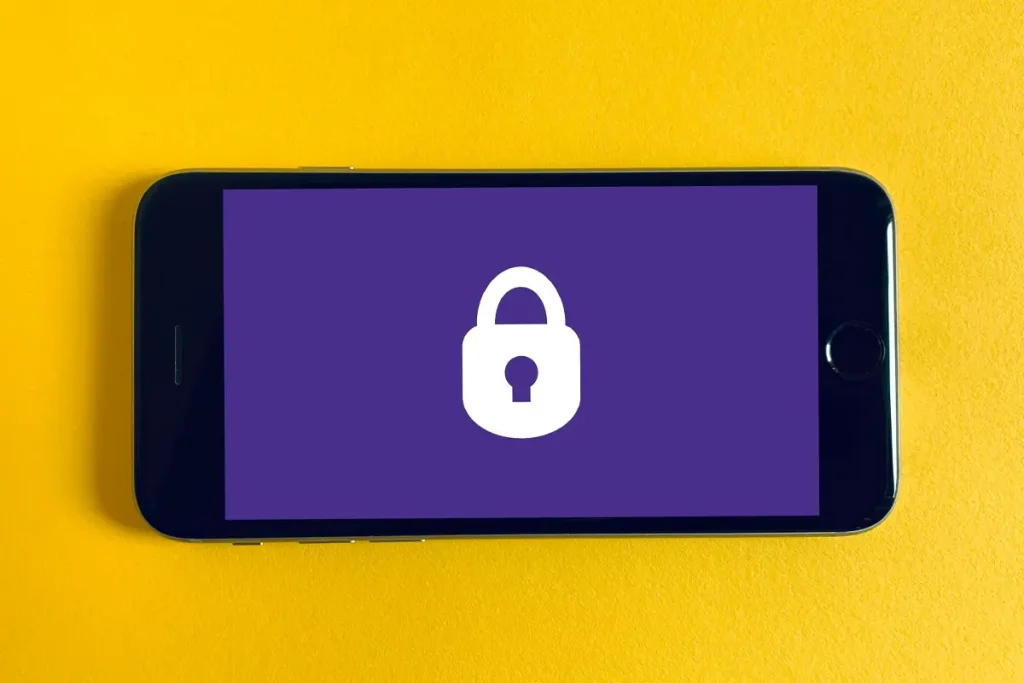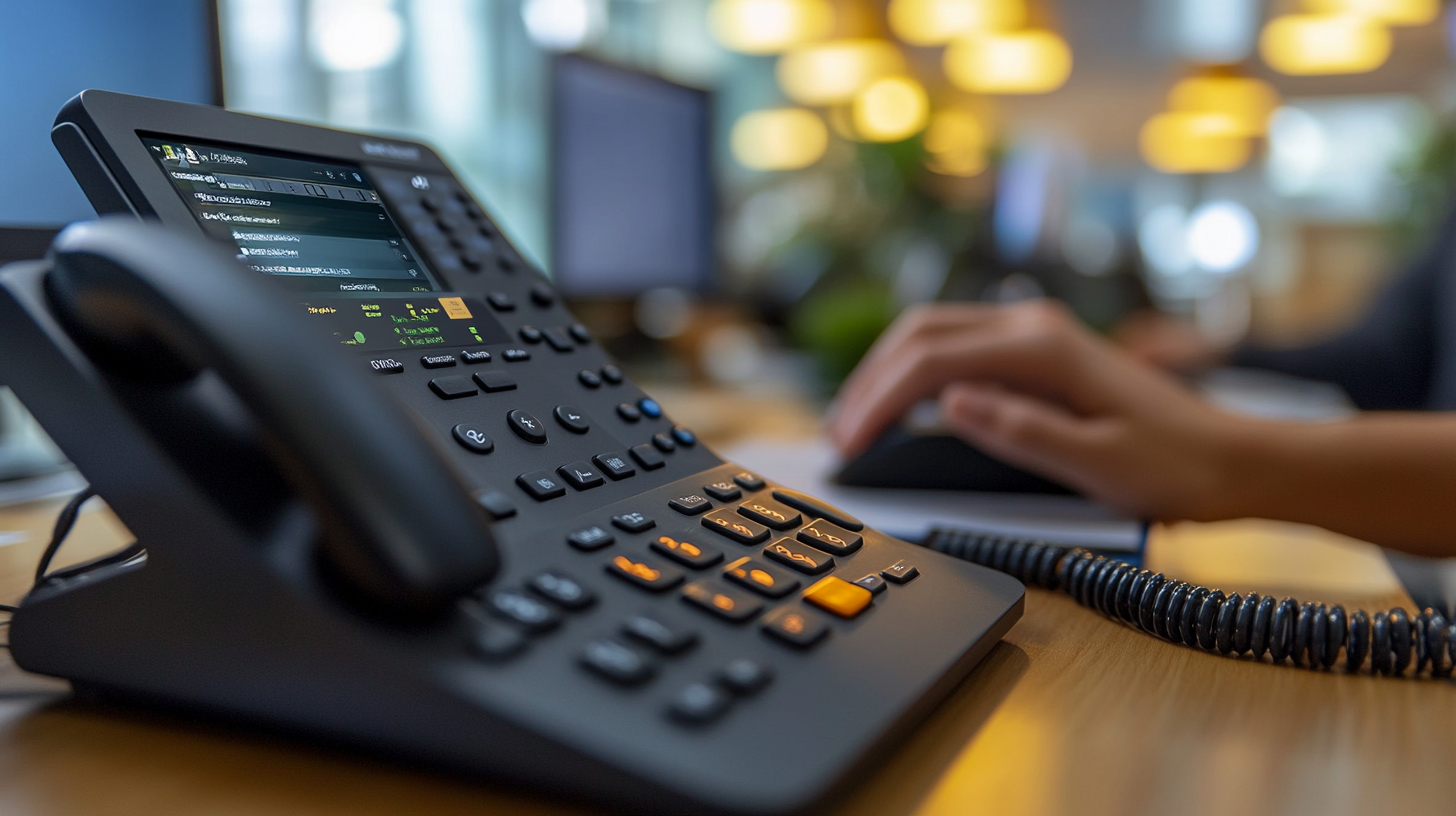When it comes to securing your VoIP communications, ensuring excellent security measures is essential. From robust encryption protocols to stringent access controls and proactive firewall configurations, each component plays a vital role in safeguarding your sensitive data. By implementing these key security measures, you can greatly enhance the integrity and confidentiality of your voice transmissions. But there’s more to explore in the domain of VoIP telephony security – uncover the intricate layers of protection that can fortify your communication environment against potential threats and vulnerabilities.
Table of Contents
ToggleEssential VoIP Security Measures and Key TakeawaysKey Takeaways
- Implement robust encryption protocols like AES and TLS.
- Enforce stringent access control measures with strong authentication.
- Configure firewalls to block unauthorized access attempts.
- Regularly update software for enhanced system security.
- Utilize IDS for continuous monitoring and threat detection.
Additional information about the installation process is available in our complete guide for VoIP installations for business.
VoIP Encryption
When implementing VoIP telephony, ensuring robust encryption protocols is paramount to safeguarding the confidentiality and integrity of communication data. Encryption benefits in VoIP technology are essential for protecting sensitive information from unauthorized access or interception.
By employing strong security protocols, such as AES (Advanced Encryption Standard) or TLS (Transport Layer Security), you can guarantee that your VoIP calls and messages remain secure and private.
AES encryption, known for its high level of security, uses symmetric key encryption to protect data during transmission. This encryption method provides a secure way to encode voice data, preventing eavesdroppers from intercepting conversations. Additionally, TLS encryption establishes a secure communication channel between VoIP endpoints, ensuring that data exchanges are encrypted and authenticated.
Implementing encryption in VoIP not only enhances the security of your communication but also helps in maintaining compliance with data protection regulations. By encrypting VoIP traffic, you mitigate the risk of data breaches and unauthorized access to sensitive information, thereby bolstering the overall integrity of your communication infrastructure.
Access Control
To enhance security in VoIP telephony systems, implementing stringent access control measures is crucial to regulate user privileges and protect against unauthorized intrusions. Access management plays a critical role in safeguarding your communication infrastructure. By employing robust security protocols, you can guarantee that only authorized users have access to sensitive data and system functionalities.
Here are four essential aspects to take into account for effective access control:
- User Authentication: Utilize strong authentication methods such as passwords, biometrics, or two-factor authentication to verify the identity of users accessing the VoIP system.
- Role-Based Access Control (RBAC): Implement RBAC to assign specific roles and permissions to users based on their responsibilities within the organization. This limits unnecessary access to critical systems.
- Access Monitoring: Regularly monitor and audit user activities within the VoIP system to detect any anomalies or unauthorized access attempts promptly. This proactive approach enhances security by identifying and addressing potential threats in real-time.
- Access Revocation: Have procedures in place to promptly revoke access privileges for users who no longer require access or have left the organization. This ensures that former employees or unauthorized individuals can’t compromise system security.
Firewall Configuration
Configuring the firewall settings on your VoIP telephony system is an essential step in fortifying your network’s security against potential threats. Firewall settings act as a barrier between your internal network and external networks, controlling incoming and outgoing network traffic based on predetermined security rules. When setting up your firewall for VoIP, it’s pivotal to configure it to allow VoIP traffic while blocking unauthorized access attempts.
Proper firewall configuration involves creating rules that specifically permit VoIP traffic to pass through while blocking other types of traffic that could pose security risks. It’s important to restrict access to VoIP ports and protocols to ensure that only legitimate VoIP communications are allowed.
Additionally, implementing network monitoring alongside firewall configuration enhances your security posture. Network monitoring tools provide real-time visibility into network traffic, allowing you to detect and respond to any suspicious activities promptly. By continuously monitoring your network, you can identify potential security breaches or anomalies and take immediate action to mitigate risks.
Regularly reviewing and updating your firewall settings and network monitoring configurations is crucial to adapt to evolving threats and ensure the ongoing security of your VoIP telephony system. By staying vigilant and proactive in managing your firewall settings and monitoring network traffic, you can greatly enhance the security of your VoIP communications.
Secure Authentication Methods
When contemplating secure authentication methods for VoIP telephony, it’s essential to focus on aspects like password strength and multi-factor authentication.
Password strength guarantees that unauthorized users can’t easily access your VoIP system, bolstering overall security.
Additionally, implementing multi-factor authentication adds an extra layer of protection by requiring users to provide multiple forms of verification before gaining access.
Password Strength
Ensuring the strength of your passwords is paramount in fortifying secure authentication methods for your digital accounts. When it comes to VoIP security practices, password complexity plays an essential role in safeguarding against cyber threats and VoIP vulnerabilities.
To enhance your password security, consider the following:
- Length: Opt for longer passwords as they’re generally more secure.
- Variety: Use a mix of uppercase and lowercase letters, numbers, and special characters.
- Avoid Common Choices: Refrain from using easily guessable information like birthdays or sequential numbers.
- Regular Updates: Change your passwords periodically to minimize the risk of unauthorized access.
Multi-Factor Authentication
Enhancing your digital security through Multi-Factor Authentication adds an essential layer of protection to your online accounts. This secure authentication method requires users to provide two or more verification factors to access their accounts, greatly reducing the risk of unauthorized access.
The authentication process typically involves something you know (like a password), something you have (such as a mobile device for receiving verification codes), or something you are (biometric data like fingerprints or facial recognition). By combining these factors, Multi-Factor Authentication enhances security by making it harder for cybercriminals to breach your accounts, ensuring that only authorized users can access sensitive information.
Implementing Multi-Factor Authentication is a critical step in safeguarding your online communications.
Regular Software Updates
To maintain high-quality security in VoIP telephony, it’s important to regularly update software to patch vulnerabilities and enhance system resilience against potential cyber threats. Keeping your software up to date is essential for safeguarding your communications. Here are four essential practices related to regular software updates:
- Automated Patch Management: Implement automated systems to make sure that patches and updates are promptly applied to your VoIP software. This helps in closing security loopholes before they can be exploited by malicious actors.
- Continuous Vulnerability Scanning: Conduct regular vulnerability scans to identify any weaknesses in your VoIP system that may arise due to outdated software. By staying proactive in scanning for vulnerabilities, you can address them swiftly and prevent security incidents.
- Version Control: Maintain strict version control to track software updates and changes effectively. This ensures that you’re aware of the current state of your VoIP software and can take necessary actions to update or roll back versions if needed.
- Vendor Notifications: Stay informed about software updates, security patches, and advisories from your VoIP software vendors. Subscribing to vendor notifications helps you stay ahead of potential security risks and enables you to act promptly to secure your VoIP system.
Intrusion Detection Systems
When considering Intrusion Detection Systems (IDS) in VoIP telephony, you need to grasp the basics of IDS functionality. The critical role it plays in threat detection and its significance in enhancing overall network security are essential factors to consider. Understanding how IDS works to identify potential security breaches, detecting anomalies, and safeguarding against unauthorized access is pivotal in fortifying VoIP systems against cyber threats.
IDS Basics
Implementing an effective Intrusion Detection System (IDS) is crucial for safeguarding network security against potential threats.
- Continuous Monitoring: IDSs provide real-time network monitoring to detect any suspicious activities promptly.
- Threat Identification: They help in identifying various cyber threats like malware, DDoS attacks, and unauthorized access attempts.
- Alerting Mechanisms: IDSs alert network administrators immediately upon detecting any potential security breaches.
- Log Generation: They generate detailed logs of network traffic and security events for further analysis and forensic purposes.
Threat Detection
Implement an effective Intrusion Detection System (IDS) to enhance network security by proactively detecting and thwarting potential threats. An IDS monitors network traffic, analyzing data packets to identify suspicious patterns or known attack signatures. By promptly recognizing unauthorized access attempts or malicious activities, the IDS plays a vital role in threat mitigation.
Configure your IDS to work seamlessly with your existing security protocols, ensuring thorough coverage and rapid responses to security incidents. Regularly update the IDS signatures and fine-tune its settings to adapt to evolving threats. Through continuous monitoring and real-time alerts, your IDS strengthens your overall network security posture, safeguarding your VoIP telephony system from potential cyber threats.
Network Security
Enhance your network security with a robust Intrusion Detection System (IDS) that actively scans for and mitigates potential threats, bolstering the protection of your VoIP telephony system. Implementing an IDS brings several key benefits:
- Continuous Network Monitoring: IDS keeps a vigilant eye on network traffic, identifying any suspicious activity that could jeopardize your VoIP system’s security.
- Real-time Threat Detection: Instantly detects and responds to potential security breaches, preventing unauthorized access to your network.
- Phishing Prevention: IDS helps in recognizing and blocking phishing attempts, safeguarding your sensitive information from falling into the wrong hands.
- Enhanced Incident Response: Enables quick and effective responses to security incidents, minimizing potential damage to your VoIP infrastructure.
Network Segmentation
Network segmentation plays an essential role in enhancing network security by dividing a network into smaller, isolated sections to control and secure traffic flow effectively. When it comes to VoIP network security, implementing network segmentation offers several key benefits. By segmenting the network, you create barriers that limit the impact of potential security breaches, keeping your VoIP systems more secure. It also helps in isolating sensitive VoIP traffic from other data, reducing the risk of unauthorized access to critical communication channels.
Implementing network segmentation involves logically separating different parts of the network based on their functions and security requirements. This approach allows for the enforcement of security policies specific to each segment, enhancing overall network security. However, challenges may arise in maintaining proper segmentation protocols, especially in dynamic environments where network changes are frequent. Ensuring that segmentation rules are consistently applied and updated across the network is essential for maintaining a robust security posture.
When considering VoIP network security, incorporating network segmentation into your strategy is a fundamental step towards safeguarding your communications. By understanding the benefits and challenges associated with network segmentation, you can proactively address security concerns and fortify your VoIP infrastructure against potential threats.
VoIP Security Policies
You should address Access Control Measures and Encryption Protocols in your VoIP security policies.
Implementing robust access controls guarantees that only authorized users can interact with your VoIP system, enhancing overall security.
Encryption protocols safeguard your communication data, preventing unauthorized access or interception, bolstering the confidentiality of your VoIP calls.
Access Control Measures
Implementing robust access control measures in VoIP security policies is crucial to safeguarding communication channels from unauthorized access and potential security breaches. To enhance your VoIP system’s security, consider the following key measures:
- User Permissions: Restrict access based on roles to guarantee only authorized individuals can make configuration changes or access sensitive information.
- Network Segregation: Separate VoIP traffic from other network data to prevent unauthorized users from intercepting or manipulating voice data.
- Strong Authentication: Implement multi-factor authentication to verify user identities and prevent unauthorized logins.
- Regular Auditing: Conduct periodic reviews of access logs and permissions to identify and address any anomalies promptly.
Encryption Protocols
Utilize robust encryption protocols to fortify the security of your VoIP communications effectively. By implementing encryption protocols, you enhance data privacy and communication security within your VoIP network.
Encryption guarantees that your voice data is securely transmitted over the internet, safeguarding it from unauthorized access or interception. Advanced encryption standards such as AES (Advanced Encryption Standard) can be employed to encrypt VoIP traffic, making it challenging for malicious actors to decipher the information.
Encryption protocols play an important role in securing your VoIP calls and messages, providing a secure communication channel for your business or personal conversations. Prioritizing encryption protocols in your VoIP system is essential for maintaining the confidentiality and integrity of your communication data.
Secure Call Routing
In order to maintain the confidentiality and integrity of voice data transmission, implementing robust authentication protocols is essential in securing call routing for VoIP telephony systems. Ensuring secure call routing is vital for protecting sensitive information and guaranteeing uninterrupted communication flow.
Here are four key measures to enhance the security of call routing:
- Multi-factor Authentication: Enforce multi-factor authentication mechanisms to validate the identities of users and devices accessing the VoIP network. By requiring multiple credentials for verification, you add an extra layer of security to prevent unauthorized access and potential breaches.
- Encrypted Signaling Protocols: Utilize encrypted signaling protocols such as Secure Real-time Transport Protocol (SRTP) to secure the signaling messages exchanged during call setup. Encryption safeguards against eavesdropping and manipulation of call routing information, maintaining the privacy of your calls.
- Access Control Lists (ACLs): Implement ACLs to control and restrict the traffic flow within your network. By defining rules that govern which devices and users can communicate with each other, you can prevent unauthorized entities from interfering with call routing processes.
- Regular Security Audits: Conduct regular security audits and assessments to identify vulnerabilities in your call routing infrastructure. By proactively monitoring and evaluating your system’s security posture, you can address potential weaknesses promptly and fortify your defenses against evolving threats.
Monitoring and Logging
When considering security measures in VoIP telephony, monitoring and logging play pivotal roles in safeguarding your communication network.
Data Security Monitoring helps track and analyze network traffic for any suspicious activities or unauthorized access attempts.
Call Activity Logging guarantees a detailed record of all calls, aiding in compliance adherence and forensic investigations.
An Intrusion Detection System acts as a proactive defense mechanism, promptly alerting to any potential security breaches within your VoIP system.
Data Security Monitoring
Implementing robust data security monitoring through monitoring and logging is crucial for safeguarding sensitive information in VoIP telephony systems. To enhance data security and mitigate cybersecurity risks effectively, consider the following key measures:
- Real-Time Monitoring: Implement systems that continuously monitor network traffic for any suspicious activities or unauthorized access attempts.
- Log Analysis: Regularly review logs to identify potential security incidents, anomalies, or breaches in the system.
- Integration with SIEM: Integrate monitoring tools with Security Information and Event Management (SIEM) systems for centralized log management and analysis.
- Alert Mechanisms: Set up alerts for unusual network behavior or unauthorized access to ensure timely responses to potential threats.
Call Activity Logging
For effective monitoring and logging of call activity in VoIP telephony systems, consider establishing a thorough data tracking mechanism. Call activity monitoring plays an important role in ensuring the security of your communications.
By implementing robust call encryption techniques, you can safeguard sensitive information exchanged during VoIP calls. Logging call activities not only provides a record of communication but also aids in detecting any unusual patterns or unauthorized access attempts.
Effective monitoring allows for the identification of potential security breaches promptly. Utilizing advanced encryption methods enhances the confidentiality of your calls, making it notably harder for malicious actors to intercept and decipher sensitive data.
Implementing detailed call activity logging is essential in fortifying the security of your VoIP telephony system.
Intrusion Detection System
To enhance the security of your VoIP telephony system, deploying an Intrusion Detection System (IDS) with robust monitoring and logging capabilities is essential. Here are four key aspects worth evaluating when implementing an IDS:
- Continuous Network Monitoring: Set up real-time monitoring to detect and respond to any suspicious activities on your network promptly.
- Threat Prevention: Utilize the IDS to proactively identify potential threats and prevent security breaches before they can cause harm.
- Log Analysis: Regularly review and analyze the logs generated by the IDS to identify patterns or anomalies that may indicate a security issue.
- Alert Mechanisms: Configure alert systems within the IDS to notify you immediately of any potential security breaches, allowing for swift action to mitigate risks.
Voice Traffic Encryption
Voice traffic encryption enhances the security of your VoIP calls by encoding the transmitted data to prevent unauthorized access to sensitive information. Network encryption involves securing the data packets as they travel across the network, guaranteeing that even if intercepted, the information remains protected. This encryption method uses algorithms to scramble the data, making it unreadable to anyone without the decryption key.
Call encryption, on the other hand, focuses on securing the actual conversation between parties. It ensures that the voice data exchanged during a call is encrypted, safeguarding the content from eavesdroppers. By implementing strong encryption protocols, such as Secure Real-time Transport Protocol (SRTP) or ZRTP, VoIP service providers can ensure that your conversations are secure and private.
Voice traffic encryption plays a crucial role in maintaining the confidentiality and integrity of your communications. Without proper encryption measures in place, your VoIP calls could be vulnerable to interception and manipulation. By prioritizing network and call encryption in your VoIP setup, you can greatly reduce the risk of unauthorized access to your sensitive conversations and data.
Anti-Malware Protection
Enhancing the security of your VoIP system involves implementing robust anti-malware protection measures to safeguard against potential threats. Malware prevention is essential to guarantee the integrity of your communications. Here are four key strategies to bolster your anti-malware defenses:
- Regular Scans: Utilize reputable security software to conduct regular malware scans on all devices connected to your VoIP network. These scans should be scheduled frequently to detect and remove any malicious software that could compromise your system.
- Real-Time Protection: Invest in security software that offers real-time protection against malware. This feature actively monitors incoming data and traffic to identify and block potential threats before they can infiltrate your VoIP infrastructure.
- Firewall Configuration: Configure your network’s firewall settings to filter out suspicious traffic and prevent malware from entering your system. Implementing strict firewall rules can add an extra layer of defense against malicious attacks.
- Software Updates: Keep all security software and operating systems up to date to ensure you have the latest patches and protections against emerging malware threats. Regular updates help to address vulnerabilities that attackers could exploit to introduce malware into your VoIP environment.
Vendor Security Assessments
Conducting thorough vendor security assessments is vital in guaranteeing the overall integrity and reliability of your VoIP telephony system. When evaluating vendors for your VoIP infrastructure, performing detailed security audits is essential. These audits explore the vendor’s security protocols, encryption methods, data handling practices, and overall system vulnerabilities. By carrying out these assessments, you can pinpoint potential security gaps and confirm that your selected vendors meet the necessary compliance standards required for safeguarding your communications.
Security audits play a crucial role in verifying that vendors adhere to industry best practices and regulatory requirements. Evaluating their security measures helps ensure that sensitive information transmitted over VoIP networks remains protected from unauthorized access or cyber threats. In addition to audits, evaluating vendors against established compliance standards such as ISO 27001, GDPR, or HIPAA, depending on your industry, is essential. This ensures that your VoIP service providers follow strict security guidelines and data protection regulations.
Disaster Recovery Planning
Implementing a thorough disaster recovery plan is crucial for safeguarding the continuity and security of your VoIP telephony system in unforeseen circumstances. To guarantee your communications remain stable and protected even in the face of disasters, consider the following key strategies:
- Backup strategies: Regularly back up your VoIP system’s configuration settings, call logs, and other critical data to a secure off-site location. Having up-to-date backups can greatly reduce downtime in the event of a system failure or data loss.
- Communication redundancy: Establish redundancy in your communication channels by utilizing multiple internet connections from different providers. This setup can help lessen the impact of network outages or failures, ensuring that your VoIP services remain accessible.
- Failover solutions: Implement failover mechanisms that automatically switch to backup servers or alternative communication paths when primary systems experience disruptions. This proactive approach can minimize service interruptions and maintain seamless communication during unexpected incidents.
- Testing and regular updates: Conduct routine testing of your disaster recovery plan to identify any weaknesses or gaps that need to be addressed. Additionally, make sure that all software and hardware components involved in your VoIP system are kept up to date to maximize security and performance.
Employee Training and Awareness
To ensure the robust security of your VoIP telephony system, prioritize thorough employee training and awareness. Employee training plays a pivotal role in enhancing the overall security posture of your organization’s VoIP infrastructure. By conducting role-playing exercises, employees can actively engage in simulated security breach scenarios, allowing them to understand potential threats and appropriate responses. These exercises help employees develop a proactive mindset towards security, fostering a culture of vigilance within the organization.
Security workshops are another essential component of employee training and awareness. These workshops provide a platform for in-depth discussions on various security protocols, best practices, and emerging threats in the domain of VoIP telephony. By participating in these workshops, employees can stay informed about the latest security trends and learn how to implement security measures effectively. Additionally, workshops offer a collaborative environment where employees can share insights, ask questions, and collectively work towards strengthening the security of the VoIP infrastructure.
Frequently Asked Questions
How Can I Protect My VoIP System from Social Engineering Attacks?
To safeguard your VoIP system from social engineering attacks, focus on employee training and call screening. Educate your staff on recognizing phishing attempts and the dangers of caller ID spoofing.
What Are the Common Vulnerabilities in VoIP Systems?
To safeguard your VoIP system, address common vulnerabilities. Implement network segmentation for added protection. Regularly update firmware to patch security holes. Utilize intrusion detection to spot unusual activity. Enforce strong passwords to prevent unauthorized access.
These practices fortify your system and enhance its security against potential threats. By incorporating these measures, you can bolster the resilience of your VoIP infrastructure.
Is It Necessary to Encrypt All VoIP Calls for Security?
Encrypting all VoIP calls is essential for security. It enhances call privacy and safeguards your conversations from potential eavesdropping or data breaches.
By prioritizing encryption, you guarantee that your communications remain confidential and protected against unauthorized access. Embracing this security measure is a proactive step in fortifying your VoIP system and maintaining the integrity of your sensitive information.
Make encryption a top priority to secure your VoIP communications effectively.
How Can I Ensure the Security of My VoIP Network Against Eavesdropping?
Implement network segmentation to isolate sensitive data and limit access points.
Regularly monitor network traffic for any anomalies or unauthorized access attempts.
What Measures Can Be Taken to Prevent Toll Fraud in VoIP Telephony Systems?
To prevent toll fraud in VoIP telephony systems, you must implement access controls. By setting up stringent authentication measures and restricting unauthorized access, you can safeguard your system from fraudulent activities.
Stay vigilant and regularly monitor call patterns for any unusual behavior. Preventing toll fraud requires proactive measures and a keen eye for detecting suspicious activities promptly.
Keep your system secure by implementing robust access controls and monitoring protocols.
Final Thoughts
Implementing top security measures in VoIP telephony is vital for safeguarding your communication data. By utilizing encryption protocols, access control, firewall configurations, secure authentication methods, and regular software updates, you can enhance the security posture of your VoIP system.
However, remember that staying vigilant against potential threats and vulnerabilities is an ongoing process. Stay informed, stay proactive, and keep your communication environment secure.






